One day after Google officially announced the May 2022 Core Update, the Semrush Sensor caught significantly high levels of rank fluctuations.
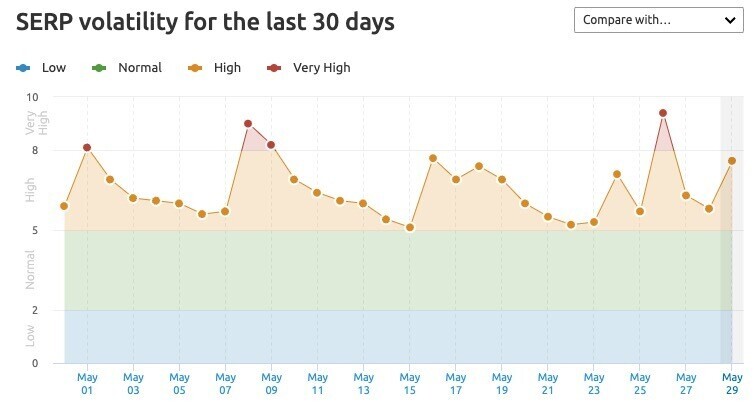
However, the initial burst of extremely high rank volatility lasted only one day. This is similar to volatility patterns exhibited both during the July 2021 Core Update and the November 2021 Core Update.
It seems that Google is adopting a much quicker initial increase in rank volatility during its core updates; prior to the most recent update, this initial period of extreme rank volatility would last 3-4 days or longer.
Let’s take a look at the initial impact of the update and what it means for the winners and losers this time around.
How Volatile Was the May 2022 Core Update?
The answer here is complicated. When looking at the peak levels of rank volatility, the May 2022 Core Update seems as potent as the November 2021 Core Update.
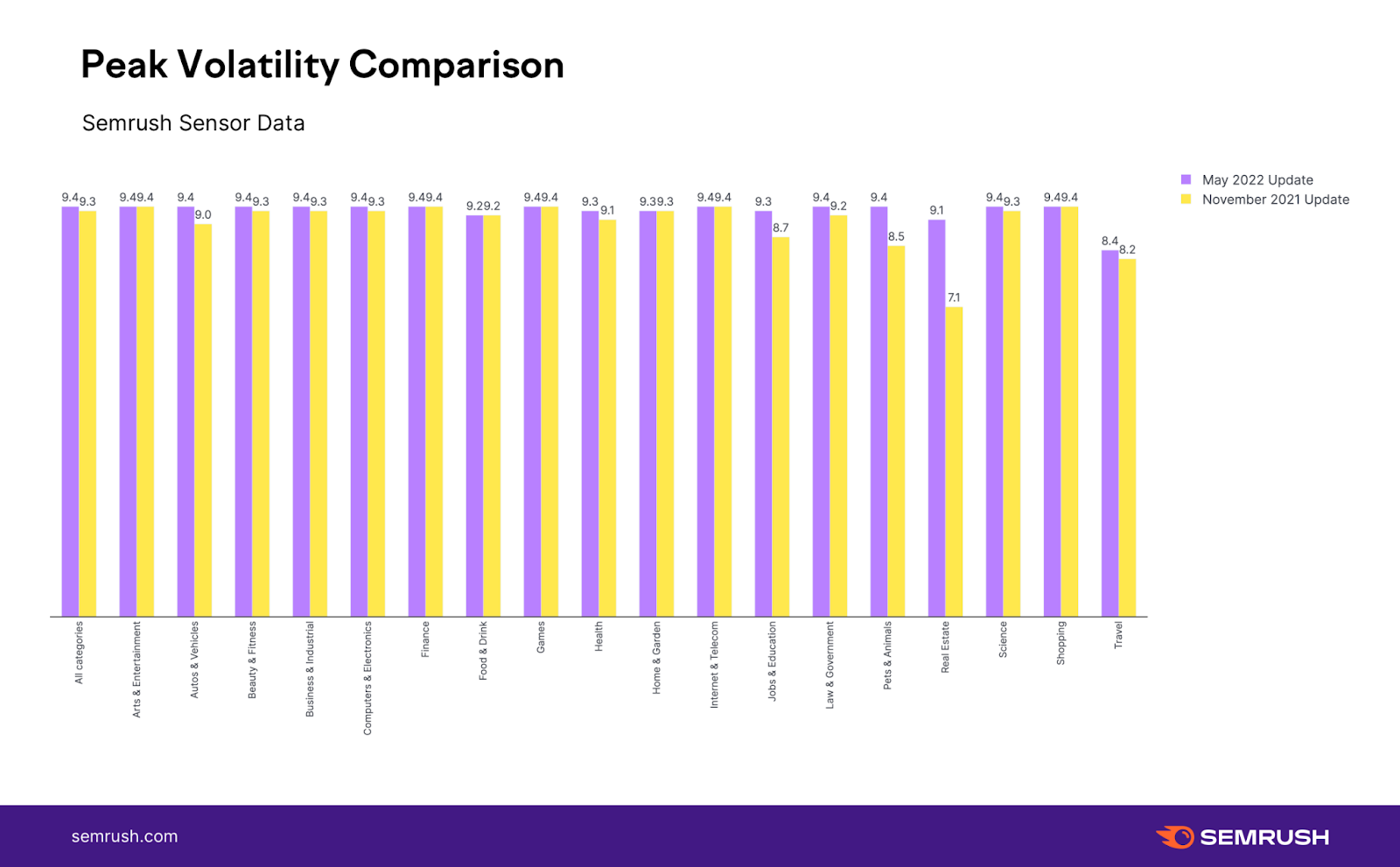
The peak levels of volatility seen during the May update are almost exclusively upward of 9/10 across verticals; Real Estate in particular was noticeably higher than it was during the November 2021 Core Update.
Overall, the average peak level of volatility was 9.4 on desktop and mobile. This stands at a similar level to the November 2021 Core Update, during which peak levels came in at 9.3 on both desktop and mobile.
From this perspective, the May 2022 and November 2021 Core Updates seem to have been equally powerful in terms of their impact on rank volatility, but we see that’s not the case when we zoom in a little more.
When we look at the change in the average level of volatility, we can see that the November 2021 Core Update was far more impactful. It produced a far greater change to the baseline level of volatility that existed before the update:
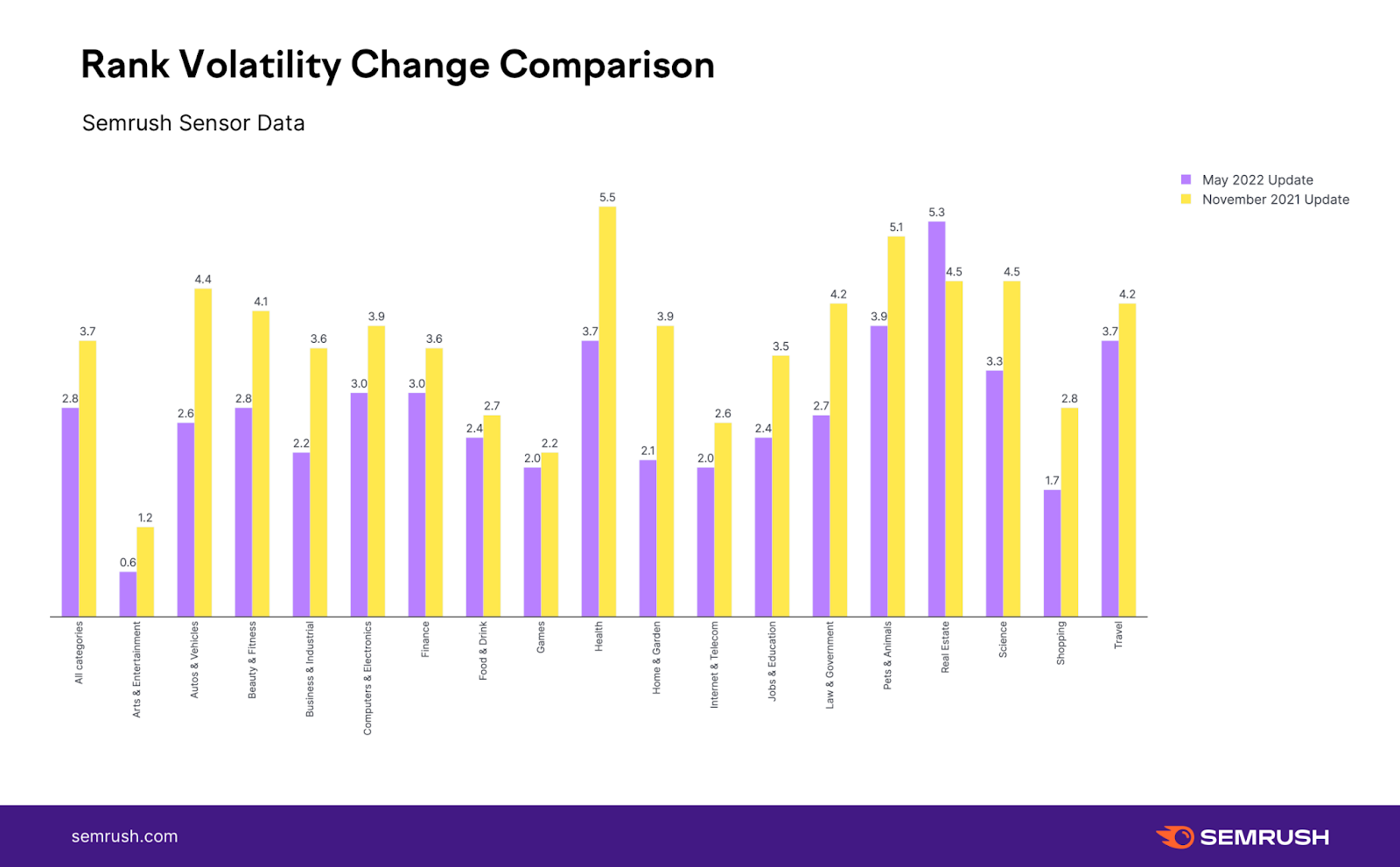
Specifically, the November 2021 Core Update took a pre-update level of rank volatility from 5.6 all the way to 9.3 on desktop. Comparatively, there was a far higher level of baseline volatility before the May 2022 Core Update; the pre-update level was 6.4 on desktop, which increased to 9.4 during the update.
While the highest levels of volatility seen during both updates were quite similar, they had further to climb during the November 2021 Core Update. Some residue volatility existed before May’s update began, so it doesn’t seem to have been as impactful as the one in November.
When we look at changes per device, desktop and mobile figures during May’s update proved to be similar in terms of peak volatility, where a level of 9.4 was reached on both devices:

The increase in volatility relative to pre-update levels was slightly different across devices, though, as mobile displayed slightly more volatility prior to the update:
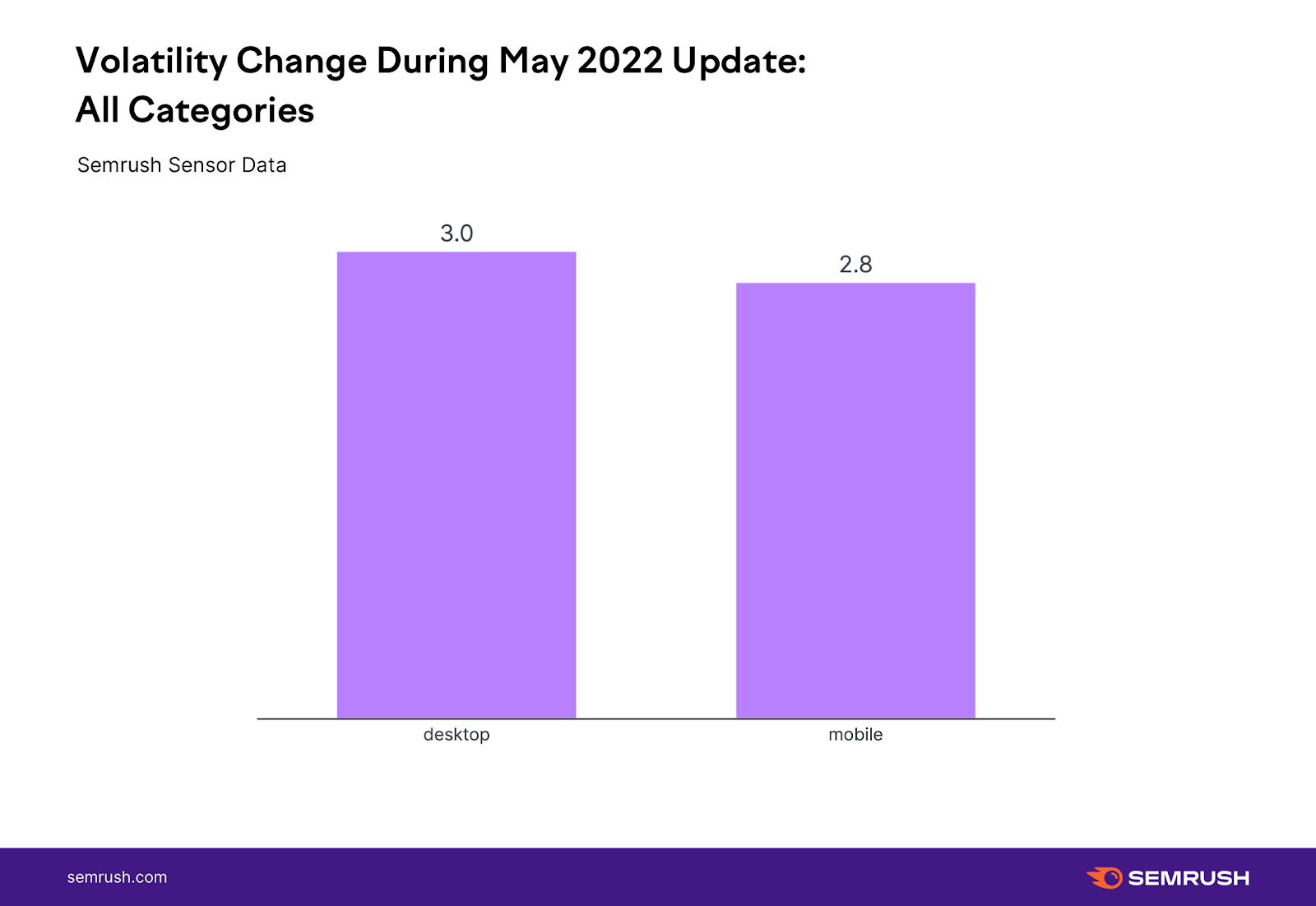
There doesn’t appear to have been any dramatic change to specific verticals on this occasion, as the most impacted verticals were the same across devices.
On desktop, the following verticals saw the greatest increase in rank volatility:
| Real Estate |
| Books & Literature |
| Hobbies & Leisure |
| Travel |
| Pets & Animals |
On mobile, Health replaced Travel within the top 5 most impacted verticals:
| Real Estate |
| Pets & Animals |
| Hobbies & Leisure |
| Books & Literature |
| Health |
In both cases, Real Estate was the only vertical to see a volatility increase of over 5 points across devices, with increases of 5.4 on desktop and 5.3 mobile, but there were no fluctuations that indicate this update targeted specific niches.
Qualifying the Impact of the May 2022 Core Update
We are still assessing the full impact of the update, of course, as changes continue to take shape over time. To help get a sense of the initial impact and scope of the May 2022 Core Update, however, we investigated where newly ranking URLs came from if they appeared in the top 10 this time.
Here, in a similar way to the November 2021 Core Update, 6.7% of the top 10 results were previously ranked beyond position 20.
This is fairly typical for a core update and would indicate that there were some significant ranking shifts in May, but it remains to be seen whether or not this is a sign of consistency in the impact of Google’s updates.
To understand this further, we also looked at the top 20 results overall to see the previous positions of the newly ranking URLs. Here, over 17% of URLs among the top 20 came from beyond position 20 itself.
Once again, this appears to have been very similar to the November 2021 Core Update, during which 16.2% of new URLs within the top 20 results ranked beyond position 20 prior to the update.
You can read more about the ongoing impact of Google’s updates in our study here: Are Core Updates Becoming Less Powerful?
Parity Between Rank Gains and Losses
While we continue to analyze the impact of these algorithmic changes, we know that different updates can display different ranking patterns. For example, in some instances, while there may be sharp and drastic declines in ranking, Google will incrementally improve the rankings of the remaining URLs on page one by a position or two, so as to replace the URL(s) demoted from the SERP (or at least from page one of the SERP).
To better assess how the May 2022 Core Update behaved, we analyzed the average gain and loss in position that URLs experienced as a result of the changes. How did different industries fare against one another across mobile and desktop combined?
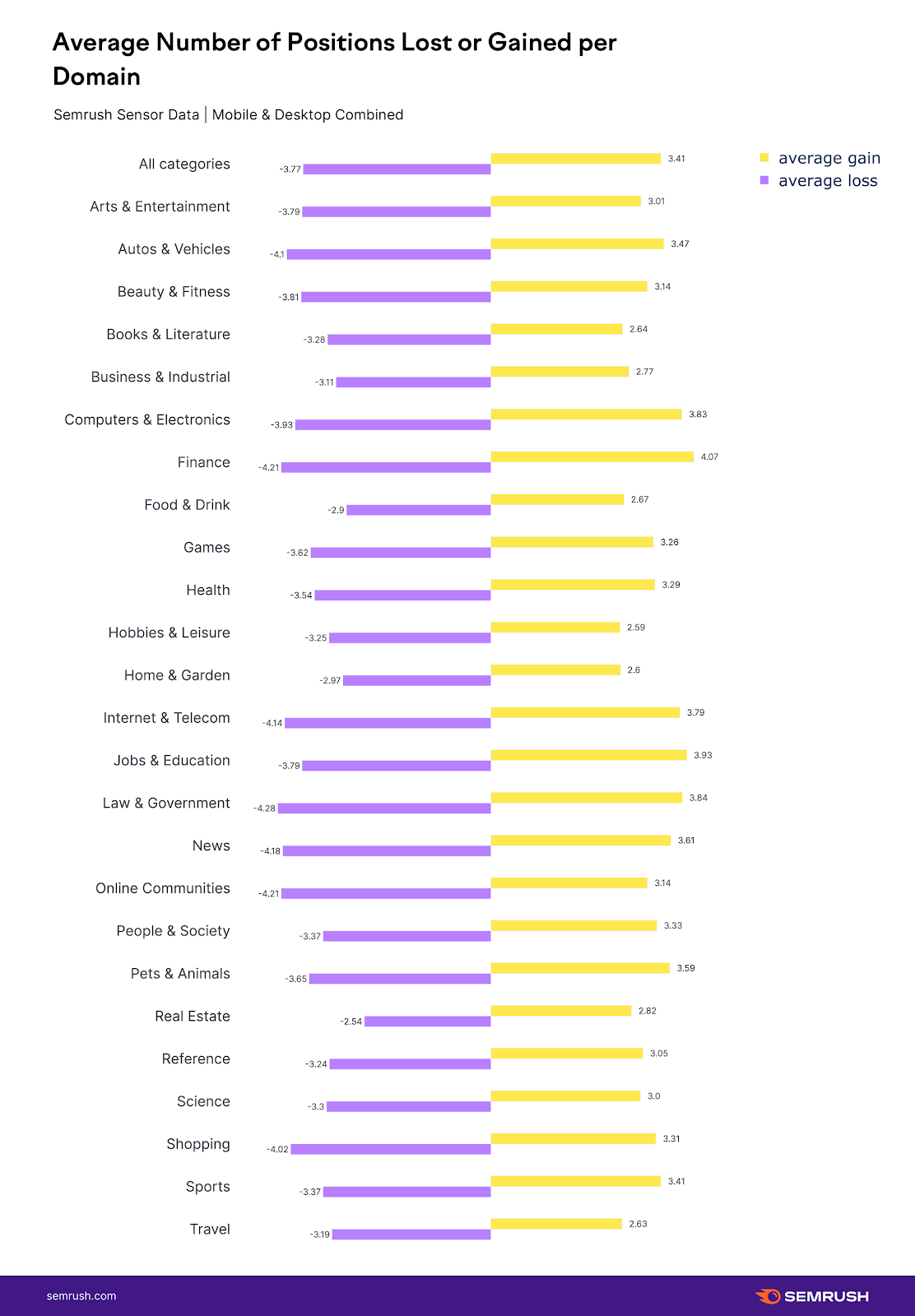
For the most part, there is general parity between instances where URLs underwent ranking losses and ranking gains. Overall, the URLs that lost ranking positions lost an average of 3.8 positions, while those that improved rankings gained an average of 3.4 positions.
There were some verticals that deviated from this pattern, such as Arts & Entertainment and Books & Literature; each one lost more than it gained. The need to focus on creating quality content (which includes considering E-A-T) relevant to your audience is universal.
Without looking at specific instances, it’s hard to diagnose the causes of the disparities. They can range from how Google utilizes SERP features within any given vertical to the content available to Google and its inclination to significantly reward it.
Changes in rankings as a result of algo updates can cause mass hysteria in the SEO community, but it’s crucial to approach them with a long-term mindset. As real as a negative change in rankings is, core updates can present new opportunities to sites (and even if impacted negatively, there is always the possibility of making improvements that ultimately bring long-term growth).
Average Gains and Losses During the May 2022 Core Update
When we take a look at the top 100 websites that experienced the biggest losses and gains, as we did after the November 2021 Core Update, we see that:
- The May update winners gained around 31.4 positions, with an average position of 10.2. For context, November’s winners gained 33.6 positions.
- Those that were most heavily impacted by the update lost around 34.9 positions. In November, they lost 27.6 positions.
Over to You
Insofar as the initial volatility is concerned on the back of Google’s core updates, it’s interesting to see a change in its tendencies around releasing them. Rather than the marquee events they perhaps once were, Google makes a point of stating that it carries them out “several times per year.”
This could be a part of a larger trend that has core updates becoming less impactful over time. At a minimum, though, it makes the need to track the full roll-out of an update and prepare your site for future updates all the more necessary.
As with all core updates, it bears repeating that you should hone in on the quality of your content if you see an update negatively impact your rankings and traffic. Don’t fall into the trap of focusing on loss of rank.
Before devoting important resources to making changes to your site, make sure the ranking loss impacts keywords that are vital for your site’s health and success and will mean a real loss of traffic as a result.
Only then can you begin to understand and plan where to focus your attention, from content creation that’s perfectly aligned to your niche to full optimization of content you already own.
